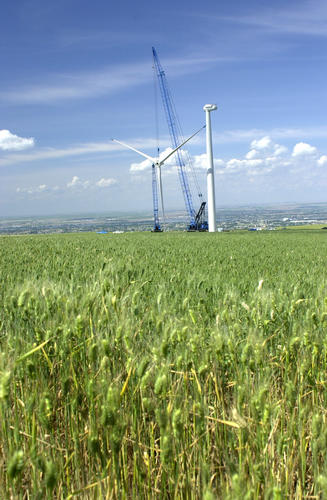| About Wind Energy |
| Benefits of Wind |
| Factsheets and Statistics |
| Frequently Asked Questions |
| Links |

Benefits of Wind Energy
Wind energy releases no pollution into the air or water, and does not contribute to global warming. According to the American Wind Energy Association, "on average, each MWh of electricity generated in the U.S. results in the emission of 1,341 pounds of carbon dioxide (CO2), 7.5 pounds of sulfur dioxide (SO2) and 3.55 pounds of nitrogen oxides (NOx). Thus the 10 million MWh of electricity generated annually by U.S. wind farms represents about 6.7 million tons in avoided CO2 emissions, 37,500 tons of SO2 and 17,750 tons of NOx. This avoided CO2 equals over 1.8 million tons of carbon, enough to fill 180 trains, each 100 cars long, with each car holding 100 tons of carbon every year." And unlike most other electricity sources, wind turbines do not consume water. Wind power is a free and inexhaustible ("renewable") source of energy. Unlike fossil fuels such as coal and oil, which exist in a finite supply and which must be extracted from the earth at great environmental cost, wind turbines harness a boundless supply of kinetic energy in the form of wind. Adding wind power to the energy supply diversifies the national energy portfolio and reduces America's reliance on imported fuels, stabilizing the the cost of electricity, reducing vulnerability to price spikes and supply disruptions, and bolstering the security of our national energy supply. Wind farm development is an excellent source of local jobs, from construction to maintenance and upkeep. Because good wind resources are often found in remote and/or economically disadvantaged areas, wind power provides steady and significant revenue to rural landowners, farmers, and communities. Wind turbines occupy little surface area, leaving land open for farming, housing, and other uses. |
 Energy Northwest / DOE/NREL |
|
 David Parsons / DOE/NREL |